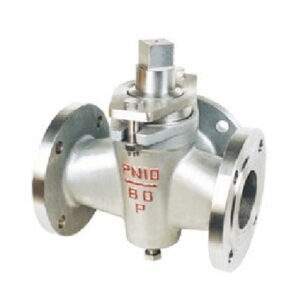Introduction

Plug valves, often referred to as cock valves, are indispensable components in numerous industrial processes. Their primary function is to regulate the flow of fluids, encompassing both liquids and gases, within pipelines and systems. This comprehensive guide delves into the intricate world of plug valves, exploring their design, operation, diverse types, wide-ranging applications, and substantial advantages. By the conclusion of this article, you will possess a thorough understanding of plug valve and their pivotal role across various industries.
How Plug Valves Work
A plug valve comprises a cylindrical body with a precisely bored passageway. A tapered plug, also known as a spindle, is inserted into this passageway. To control the fluid flow, the plug is rotated, either opening or closing the passageway. Plug valves are primarily categorized into two types: straightway and three-way.
- Straightway plug valve: When fully open, these valves provide an unobstructed, straight-through flow path.
- Three-way plug valve: As their name suggests, these valves possess three ports, enabling more complex flow patterns, such as diverting or mixing fluids.
Types of Plug Valves
Plug valves can be classified based on their construction and the materials used in their manufacturing. Some of the most common types include:
- Lubricated plug valve: These valves employ a lubricant to minimize friction between the plug and the body, making them suitable for high-temperature or corrosive applications.
- Teflon-seated plug valve: These valves utilize Teflon seats, renowned for their exceptional sealing properties and chemical resistance.
- Metal-seated plug valve: These valves are engineered to withstand high temperatures and pressures.
Applications of Plug Valves
Plug valves find extensive use in a diverse range of industries, including:
- Oil and gas: Controlling the flow of hydrocarbons and other fluids.
- Chemical processing: Handling corrosive and hazardous materials.
- Power generation: Regulating the flow of steam and other fluids.
- Water and wastewater treatment: Controlling the flow of water and chemicals.
Advantages of Plug Valves
Plug valve offer several distinct advantages over other valve types:
- Simple design: Easy to operate and maintain.
- Tight shut-off: Exceptional sealing performance, minimizing leaks.
- Durability: Built to withstand harsh operating conditions, ensuring longevity.
- Versatility: Available in a wide range of sizes and materials, accommodating diverse applications.
Selecting the Right Plug Valve
When selecting a plug valve for a specific application, several crucial factors must be considered:
- Fluid properties: Viscosity, temperature, pressure, and corrosiveness of the fluid.
- Operating conditions: Frequency of operation and required cycle life.
- Pipe size and material: Compatibility with the existing piping system.
- Safety requirements: Adherence to industry standards and regulations.
Comparison of Different Plug Valve Materials

| Material | Advantages | Disadvantages | Applications |
|---|---|---|---|
| Cast iron | Cost-effective, good corrosion resistance | Limited temperature range | Water, wastewater |
| Stainless steel | Excellent corrosion resistance, high temperature capability | High cost | Chemical processing, food and beverage |
| Teflon | Excellent chemical resistance, low friction | Not suitable for high-temperature applications | Corrosive environments |
Conclusion
Plug valves are versatile and reliable components widely used across various industries. Their simple design, tight shut-off capabilities, and durability make them an excellent choice for a broad spectrum of applications. By comprehending the different types of plug valves and their advantages, you can make informed decisions when selecting the optimal valve for your specific needs.
FAQ
What is the difference between a plug valve and a ball valve?
A plug valve utilizes a tapered plug to control flow, while a ball valve employs a spherical ball. Plug valves are generally more suitable for high-temperature and high-pressure applications.
How do I lubricate a plug valve?
Lubrication methods vary depending on the valve type. Consult the manufacturer’s instructions for specific guidelines. Generally, a suitable lubricant is injected into the valve body to reduce friction and ensure smooth operation.
What is the maximum operating temperature for a Teflon-seated plug valve?
The maximum operating temperature for a Teflon-seated plug valve depends on the specific Teflon material used. However, it is generally limited to around 400°F (204°C).
Can plug valves be used in vacuum systems?
Yes, plug valves can be used in vacuum systems, but special considerations must be made to ensure proper sealing and prevent leaks. Vacuum-rated plug valves are designed to meet these specific requirements.
